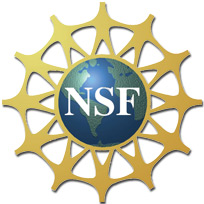Home
Biography
NSF-GK12 at Boston University
Boston University
Chelsea High School
|
|
Lesson 1: Robots Only Do What They Are Told
Subject Area |
Engineering |
Grade |
11-12 |
Estimated Length |
2 Lectures |
Prerequisite Knowledge/skills |
Basic knowledge of programming such as logic statements (AND, OR, IF … ELSE, and FOR, DO, and WHILE loops) and commands needed for robot movements. |
|
Description of New Content |
Most students have difficulty following directions and few have ever had the opportunity to give directions. They do not realize the importance of being precise. This lesson will act as a fun experiment for students to discover the necessity of precision in programming robots. More specifically, this lesson is an exercise for students to organize their thoughts in the language of machines (computers and robots.) |
Goals |
The purpose of this activity is to help students realize the need to be precise when programming a robot. |
|
Materials Needed
|
- Robots
- Computers for programming
- Design of two different paths as described in the procedure section
- An object such as a ball to be collected by the students
- Blindfolds for at least 1/3 of the students
|
|
Procedure
|
- Before class, design maps of two (or more) different paths consisting of at least four 90 degrees turns each.
- In the class, ask students how important they think directions/instructions are. Try to remind them of real life examples where they had to follow instructions such as installing a bookshelf, finding an address, or working with new gadgets. Ask them if they have experienced bad instructions/directions. Brainstorm with the students what makes directions good or bad.
- Next, divide students into groups of two (or three) and give each member a number. Have student-2s and -3s go out of the class.
- Place the object (e.g. a ball) that is to be collected by the students in the back of the room.
- Build the first track by rearranging the seats and tables in the classroom from your map. Clearly indicate the start line.
- Have student-1s write down directions on how to follow the path to the object and pick it up.
- Blindfold student-2s and guide them to the start line of the track and have student-3s, who are not facing the maze (without looking at the path,) to read the directions that student-1s have written. Have student-2s follow the directions to finish the track and collect the object.
- If the group is unsuccessful to get out of the maze and find the object, allow student-1s to modify the directions and repeat the exercise.
- Repeat this procedure with students-2s and -3s writing directions on different paths.
- Have each group program their best direction, which successfully guided their teammates out of the maze to find the object, in the language of robot software. Allow them to run their robots on the track.
- Help them to modify their codes so that the robot finishes the maze. While debugging the program, make sure the students understand the robot only does what it is being told by asking the following questions:
- What does each line in the program tell the robot to do?
- How does the robot react to the commands?
- What part of the track does the robot have problem with?
- What is your current command for that part?
- If you were blindfolded and in the place of the robot, what directions would you need to over come the problem?
- How do you translate those directions into commands in your program?
|
|
Evaluation |
Design a different track and draw it on the board. Have students write precise directions that a robot needs to complete this path on a piece of paper. Collect the directions and evaluate them. |
|
Extensions |
This exercise can also be utilized if sensors are to be added to the robots. Canes can be used to simulate the sensors. |
|

